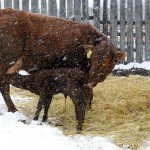Two recent events jumped agriculture’s role in the antimicrobial resistance merry-go-round into high gear. First was the Food and Drug Administration’s (FDA) Final Guidance 213 (December 2013) that established a three-year time frame to end the use of medically important antibiotics as growth promotants. There were also new rules on veterinary oversight related to antibiotic […] Read more






